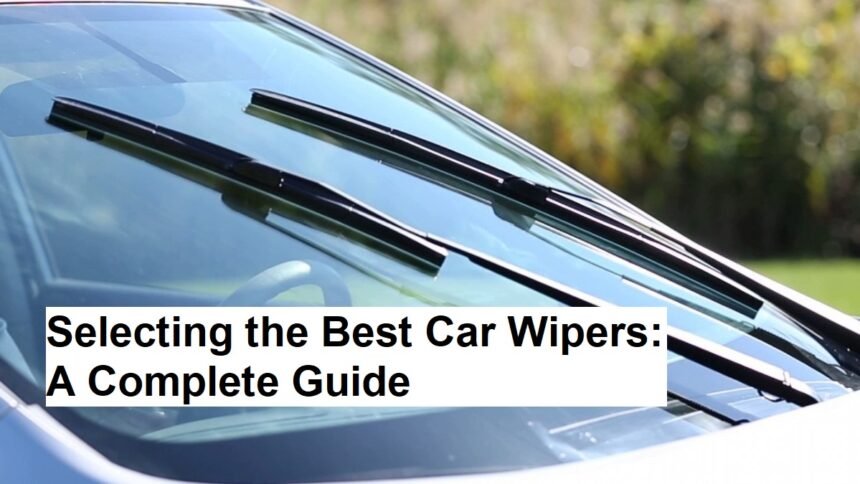Introduction
Wipers are a vital component of your vehicle’s safety system, ensuring clear visibility during rain, snow, and other adverse weather conditions. Selecting the right wiper blade type is crucial for optimal performance and longevity. With various options available in the market, understanding the different types of car wipers, along with their advantages and disadvantages, can help you make an informed purchase.
In this article, we’ll explore the most common types of wiper blades, their pros and cons, and what to consider before making your choice.
1. Conventional Frame Wipers
Overview:
Conventional or traditional frame wipers are among the most common and recognizable types. They consist of a metal or plastic frame that holds the rubber blade, which makes contact with the windshield. The frame is designed to conform to the shape of the windshield, providing consistent pressure for clear wiping.
Pros:
- Affordable: Generally, these are the most budget-friendly options.
- Ease of Replacement: Easy to install and replace without special tools.
- Availability: Widely available in auto parts stores.
Cons:
- Less Aerodynamic: The bulky frame can create wind lift at high speeds, reducing effectiveness.
- Potential for Noise: May produce squeaking or chattering over time.
- Durability: Rubber blades tend to wear out faster and require frequent replacement.
Best suited for: Those on a budget or for vehicles used primarily in mild weather conditions.
2. Beam Wipers (Rubber Blade Wipers)
Overview:
Beam blades are designed without a traditional external frame. They feature a sleek, aerodynamic design with a flexible rubber strip that conforms closely to the windshield surface, providing an even wipe.
Pros:
- Better Performance at Speed: Less wind lift, ideal for highway driving.
- Improved Contact: The flexible blade molds tightly against the glass for more effective wiping.
- Aesthetically Appealing: Sleek, modern design adds a stylish look.
Cons:
- Higher Price: Slightly more expensive than traditional frame blades.
- Complex Replacement: Might require specific tools or techniques for installation.
Best suited for: Drivers who commute long distances or often drive at high speeds, demanding consistent windshield clarity.
3. Hybrid Wipers
Overview:
Hybrid wipers combine features of both traditional frame and beam blades. They have a reinforced frame that enhances durability while maintaining a sleek, aerodynamic shape.
Pros:
- Durability: Stronger frame provides longer lifespan.
- Good Performance: Offers a balance between performance and cost.
- Less Wind Lift: Designed to stay firmly in contact with the windshield.
Cons:
- Cost: Usually more expensive than conventional blades but cheaper than full beam blades.
- Maintenance: May require more careful installation.
Best suited for: Those seeking a durable, high-performance wiper without the premium price of full beam blades.
4. Silicone Wipers
Overview:
Silicone blades are coated with a silicone compound that provides enhanced performance over standard rubber blades, especially under extreme weather conditions.
Pros:
- Longevity: Longer-lasting than standard rubber blades.
- Water Repellent: Silicone coating improves water runoff, ensuring clearer sightlines.
- Performance in Extreme Weather: Better resistant to ice and snow damage.
Cons:
- Costly: Generally more expensive than rubber options.
- Potential for Residue: May leave streaks if not maintained properly.
Best suited for: Drivers in harsh climates requiring resilient and long-lasting wipers.
5. Hybrid vs. Conventional: Which One to Choose?
Choosing the right wiper depends on your driving habits, climate, and budget. While traditional frame blades are economical, beam blades offer better performance, especially at high speeds. Hybrid wipers strike a balance between durability and function, making them a popular choice among many drivers. Silicone blades are ideal for extreme weather conditions but can be costly.
Conclusion
Before you purchase new wiper blades, it’s important to weigh the advantages and disadvantages of each type. Consider your driving conditions, climate, budget, and preference for appearance and performance. Properly functioning wipers are essential for safe driving, so investing in the right type can improve visibility dramatically and ensure your safety on the road.
Remember, regular maintenance, such as cleaning your wipers and windshield, also extends the lifespan and effectiveness of your blades.












